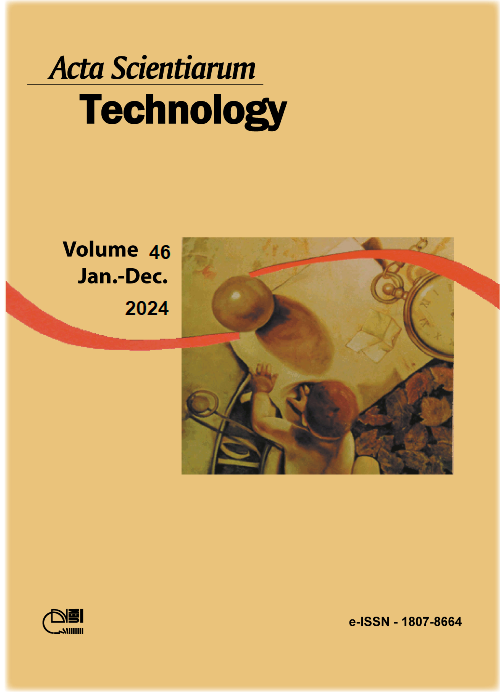Accuracy of goodness-of-fit criteria for nonlinear regression: a study via Monte Carlo simulation
DOI:
https://doi.org/10.4025/actascitechnol.v46i1.63428Palavras-chave:
Growth curves; Coefficient of determination (R^2); Asymptotic Index (AI); Mean Absolute Error (MAE); nonlinearity measures.Resumo
Nonlinear regression models are widespread in the literature, and one of their main applications is in the study of sigmoidal growth curves. There are several models for this purpose, and the most used are the logistic, Gompertz, von Bertalanffy, and Brody models. Each one of them has its own characteristics and is more suitable for a given curve shape. There are several criteria in the literature for selecting the most appropriate model, but there is no consensus on the best criteria. Thus, the present study aims to evaluate the accuracy of the main selection criteria via Monte Carlo simulation, considering the logistic, Gompertz, von Bertalanffy, and Brody nonlinear regression models. Four simulation scenarios are used, each simulated with ideal curves of the logistic, Gompertz, von Bertalanffy and Brody models. Next, the 4 models are adjusted for each of the scenarios, and the main quality criteria found in the literature are calculated to assess the ability of the criteria to identify the most appropriate model for each scenario. The results show that the criteria asymptotic index, mean absolute error and coefficient of determination choose the correct model more often than the other criteria studied. Although the measures of the Battes and Watts curvature and box bias are important for the evaluation of the goodness-of-fit of the models, they are not indicated for the selection of the best model.
Downloads
Downloads
Publicado
Como Citar
Edição
Seção
Licença
DECLARAÇíO DE ORIGINALIDADE E DIREITOS AUTORAIS
Declaro que o presente artigo é original, não tendo sido submetido í publicação em qualquer outro periódico nacional ou internacional, quer seja em parte ou em sua totalidade.
Os direitos autorais pertencem exclusivamente aos autores. Os direitos de licenciamento utilizados pelo periódico é a licença Creative Commons Attribution 4.0 (CC BY 4.0): são permitidos o compartilhamento (cópia e distribuição do material em qualqer meio ou formato) e adaptação (remix, transformação e criação de material a partir do conteúdo assim licenciado para quaisquer fins, inclusive comerciais.
Recomenda-se a leitura desse link para maiores informações sobre o tema: fornecimento de créditos e referências de forma correta, entre outros detalhes cruciais para uso adequado do material licenciado.



















